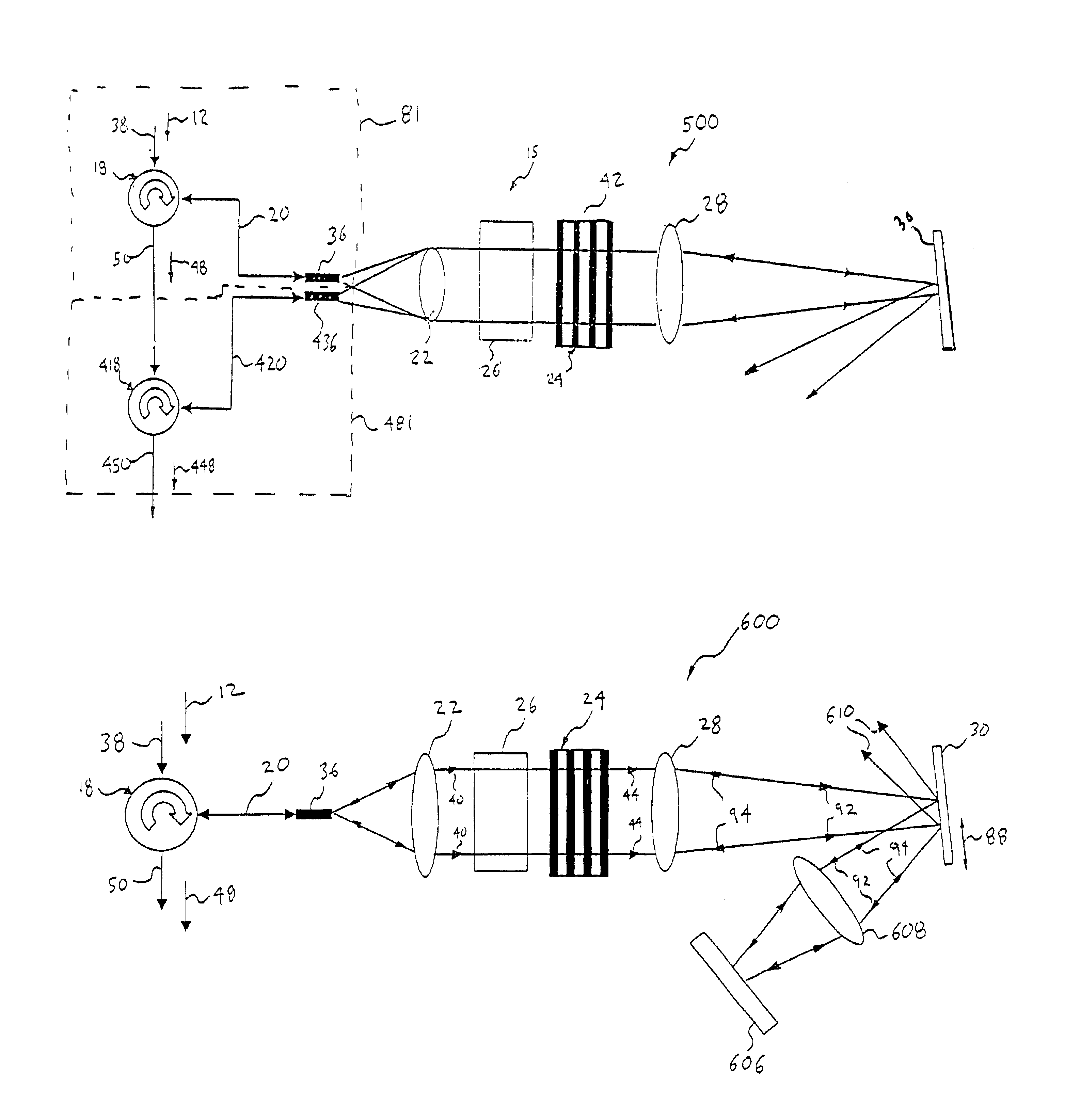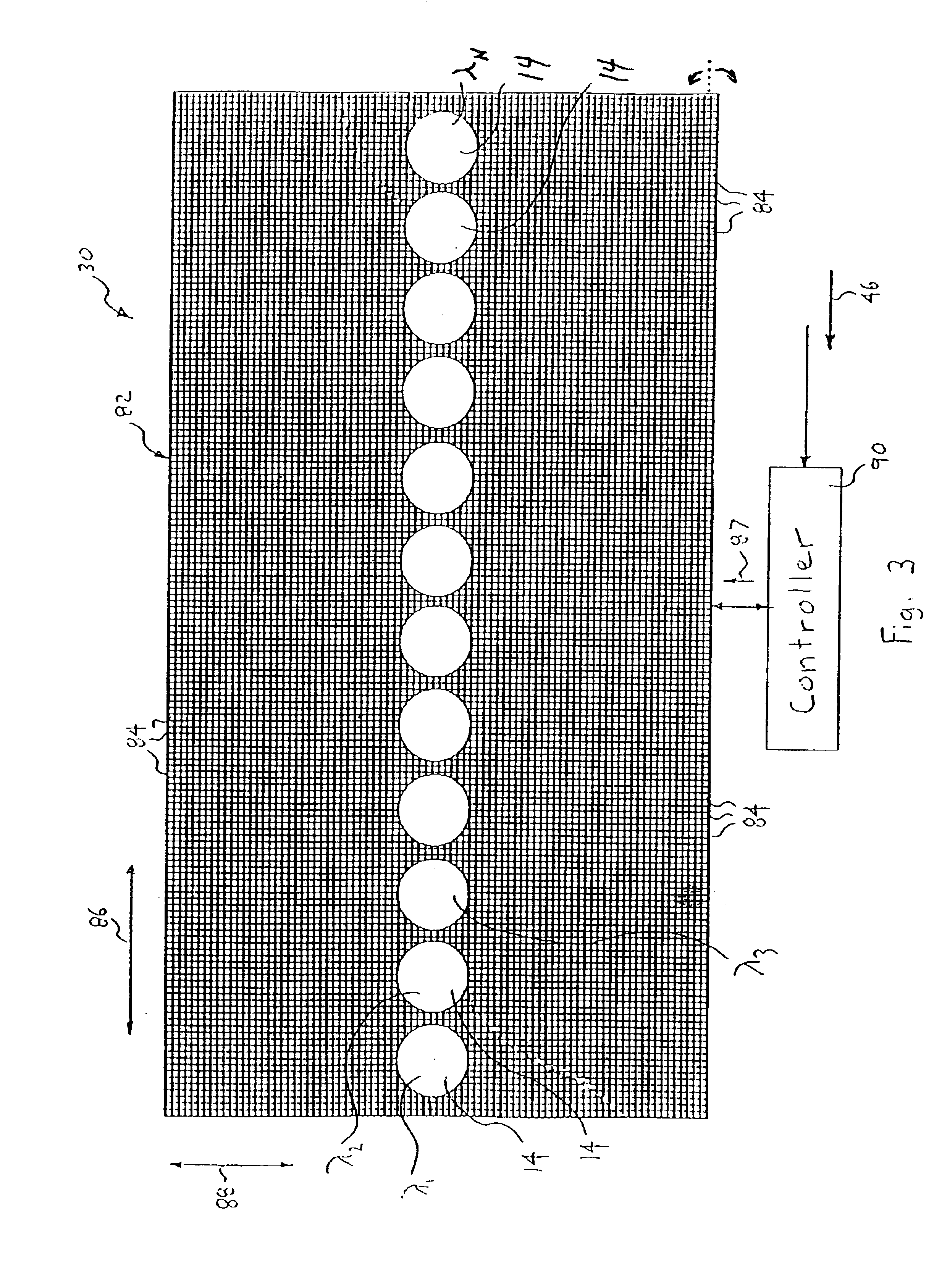Optical blocking filter having an array of micro-mirrors
a micro-mirror and optical blocking technology, applied in the field of dynamic optical filters, can solve the problems of large diffraction losses, unchannel plan independent, and high cost of 40 or 80 channel devices
- Summary
- Abstract
- Description
- Claims
- Application Information
AI Technical Summary
Benefits of technology
Problems solved by technology
Method used
Image
Examples
Embodiment Construction
[0050]Referring to FIGS. 1-3, an optical blocking filter, generally shown as 10, deletes at least one desired optical channel 14 of light (i.e., a wavelength band) from an optical WDM input signal 12. Each of the optical channels 14 (see FIG. 3) of the input signal 12 is centered at a respective channel wavelength (λ1, λ2, λ3, . . . , λN)
[0051]FIG. 1 is a top plan view of the blocking filter 10. To better understand the blocking filter 10 of FIG. 1, a side elevational view of the blocking filter is illustrated in FIG. 2. As shown in FIG. 2, the optics of the blocking filter 10 is disposed in two tiers or horizontal planes. Specifically, the blocking filter includes a three-port circulator 18, an optical fiber or pigtail 20, a collimator 22, a light dispersive element 24, a mirror 26, and a bulk lens 28 for directing light to and from a spatial light modulator 30. As shown, the pigtail 20, the collimator 22 and the light dispersive element 24 are disposed in a first tier or horizonta...
PUM
 Login to View More
Login to View More Abstract
Description
Claims
Application Information
 Login to View More
Login to View More - R&D
- Intellectual Property
- Life Sciences
- Materials
- Tech Scout
- Unparalleled Data Quality
- Higher Quality Content
- 60% Fewer Hallucinations
Browse by: Latest US Patents, China's latest patents, Technical Efficacy Thesaurus, Application Domain, Technology Topic, Popular Technical Reports.
© 2025 PatSnap. All rights reserved.Legal|Privacy policy|Modern Slavery Act Transparency Statement|Sitemap|About US| Contact US: help@patsnap.com



